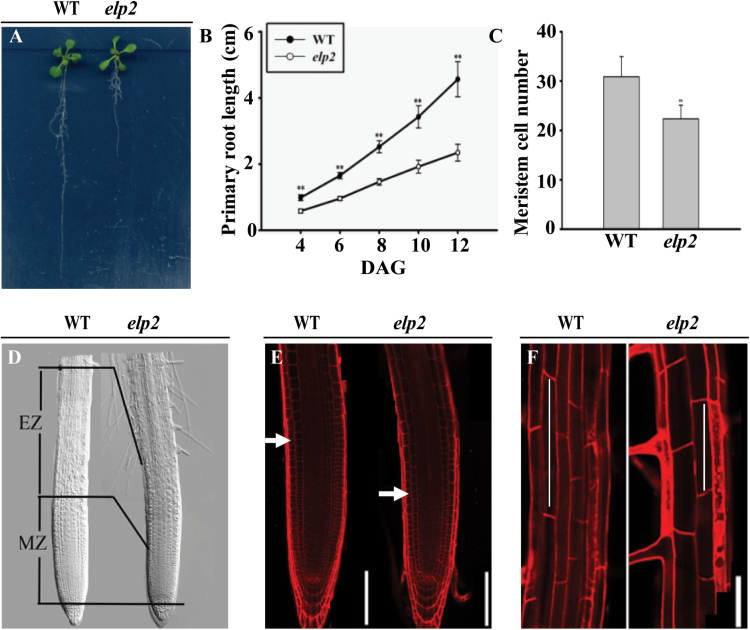Fig. 2.
The foreshortening of the roots produced by the elp2 mutant reflects a reduced level of cell proliferation and cell elongation. (A) Roots of 12-day-old seedlings of WT and elp2. (B) Primary root growth of WT and elp2 seedlings 4 d post germination. The data represent the mean and SD (n=40) derived from at least three independent experiments. (C) Variation in root meristem cell number of five-day-old WT and elp2 seedlings. Cell numbers counted from the QC to the TZ. The data represent the mean and SD (n=20) derived from at least three independent experiments. (D) Representative five-day-old WT and elp2 seedlings illustrating that the latter develop a reduced MZ and EZ. (E) Five-day-old WT and elp2 seedlings. The cortex TZ is indicated by white arrowheads. (F) Epidermal cell length of the DZ in six-day-old WT and elp2 seedlings. Bars, 50µm (E, F). **, P<0.001 (This figure is available in colour at JXB online.)

